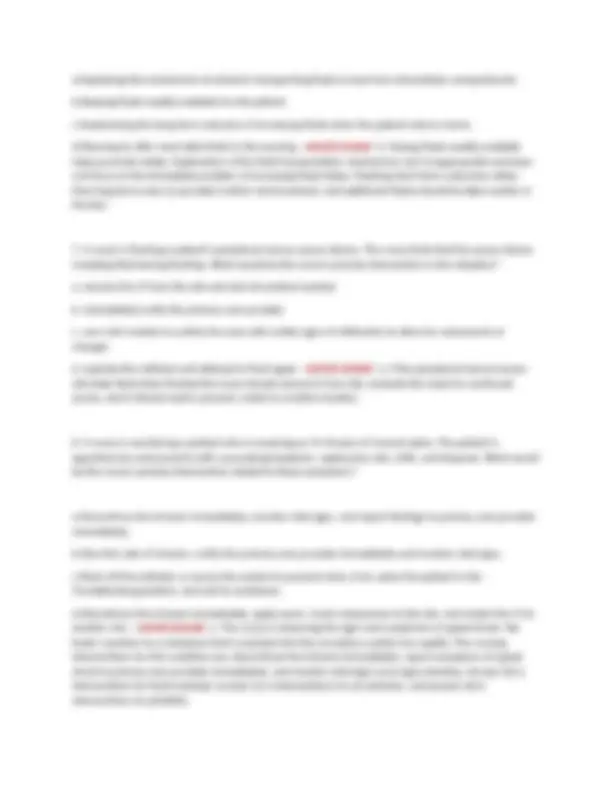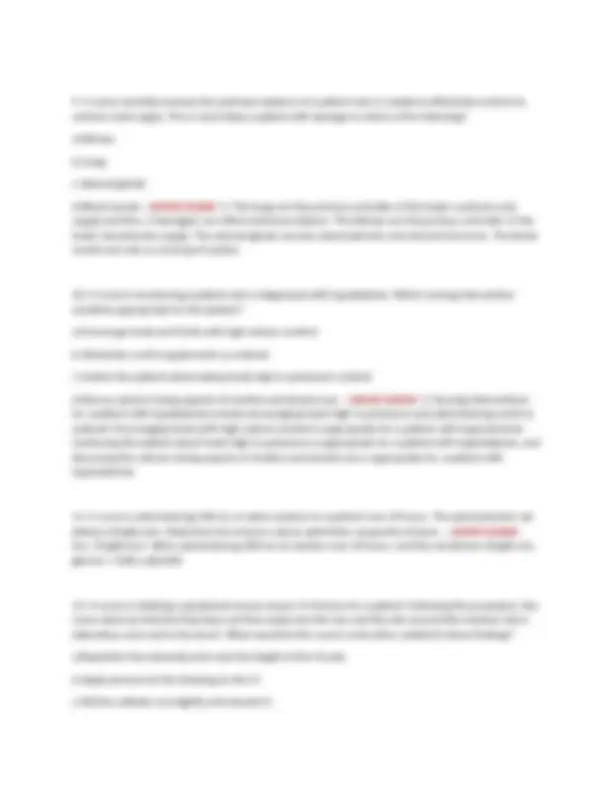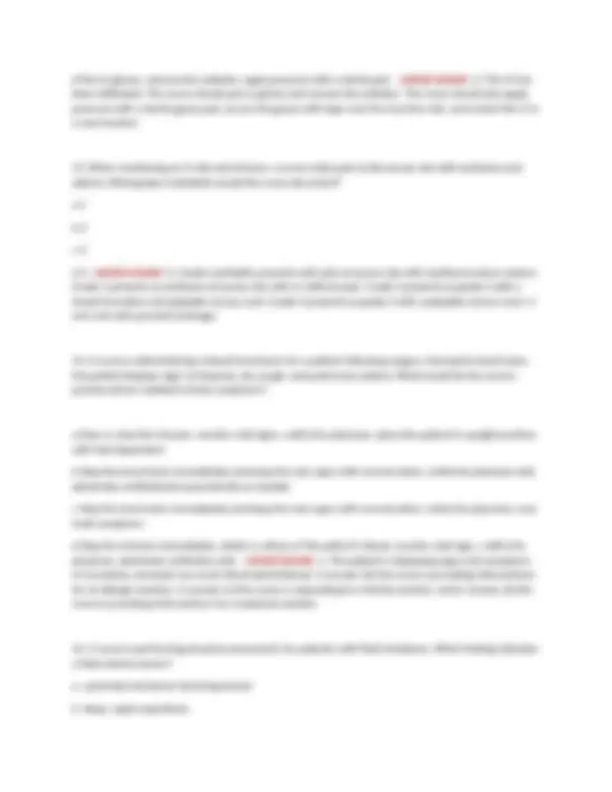





Study with the several resources on Docsity

Earn points by helping other students or get them with a premium plan


Prepare for your exams
Study with the several resources on Docsity

Earn points to download
Earn points by helping other students or get them with a premium plan
Community
Ask the community for help and clear up your study doubts
Discover the best universities in your country according to Docsity users
Free resources
Download our free guides on studying techniques, anxiety management strategies, and thesis advice from Docsity tutors
Ch. 40 Fluid, Electrolyte, and Acid-Base Balance NCLEX Questions
Typology: Exams
1 / 6

This page cannot be seen from the preview
Don't miss anything!




a.5% dextrose in 0.9% NaCl b.0.9% NaCl (normal saline) c.Lactated Ringer's solution d.0.33% NaCl (¹∕³-strength normal saline) e.0.45% NaCl (½-strength normal saline) f.5% dextrose in Lactated Ringer's solution - correct answer d, e 0.33% NaCl (¹∕³-strength normal saline), and 0.45% NaCl (½-strength normal saline) are used to treat hypernatremia.
d.Put on gloves; remove the catheter; apply pressure with a sterile pad. - correct answer d. This IV has been infiltrated. The nurse should put on gloves and remove the catheter. The nurse should also apply pressure with a sterile gauze pad, secure the gauze with tape over the insertion site, and restart the IV in a new location.